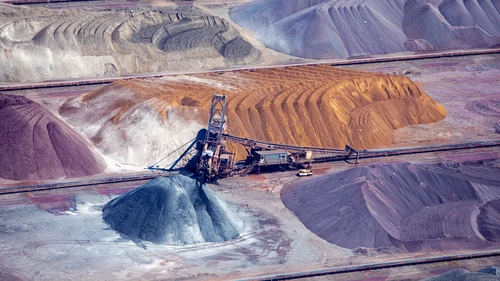JT: What are the biggest drivers of inflation, the heaviest components in the price index? Are there major differences in how different central banks measure inflation? Are some countries affected more than others by specific drivers?
TI: To begin with, in small, open economies such as the four Nordic countries, inflation is determined globally. Inflation and wages will not rise here, unless they are rising internationally. Labour, goods and services are still flowing fairly freely around most of the world. Most of the goods that Nordic households buy are imported. Just consider where your clothes or electronics are manufactured. And you can see the same general pattern in Europe and the US. Many store chains and brands are the same, and they source from the same suppliers. Jay Powell, chair of the Fed in the US, said in a speech at Jackson Hole a few years ago that he was surprised about how sticky inflation was, also in a weakening economic environment. I think this is a good illustration of the importance of world trade and globalisation. This is a challenge for central banks, in that their traditional monetary policy tools can be quite ill suited for fighting the inflation they face, and can also be a poor match for domestic monetary conditions, such as inflated asset prices.
Historically, there has been a macroeconomic view of inflation being a speedometer for the economy. High inflation has been associated with higher economic growth and high resource utilisation, and vice versa. From this point of view, controlling inflation to a limited range of variability has been a way of seeking to stabilise the economy and the business cycle. But this perceived relationship between inflation and growth has not held up in recent years, leading to central banks of late instead overheating economies in their attempts to raise inflation to targeted levels. In Sweden, for example, I would argue this has been going on for the past 10 years. And this disconnect between monetary policy measures and macroeconomic outcomes has created major imbalances in economies which need to be resolved.
While there are not huge differences in how various OECD countries measure inflation, there are examples of major differences in inflation outcomes owing to differences in exposure to specific CPI components. In the Baltic countries, for example, energy prices largely doubled. Their unusually high energy price inflation has been a key driver of their even higher inflation spikes than in other OECD countries. In China, food is a slightly bigger component in the CPI basket than in western economies, which can drive Chinese inflation higher in times of sharply rising global food prices. But as a rule of thumb, CPI baskets are similar for western advanced economies.
JT: How is CPI linked to PPI or wage inflation? Which one matters the most for the economy? Are central banks and governments targeting the right metrics with their policies?
TI: A producer price index, or PPI, measures product prices at the factory gate. In small, open economies such as the Nordic countries, the link between PPI and CPI is quite weak. Just consider Sweden, where 80% of manufactured goods are exported. Some components of PPIs can be of interest for predicting or gauging inflation, such as food. And there are services PPIs, which happen to be among our best predictors for services inflation.
Central banks focus a lot on wage inflation, in their desire to avoid a potential pricewage spiral that could cement higher inflation. In this context, they watch services wage inflation particularly closely. What academic research generally shows is that inflation drives wage inflation, and not the other way around. Sure, there can be additional inflationary impulses if wages start to drift, but the core dynamic is that consumer prices rise and drive pressure on wages to rise to compensate. We expect wage inflation to generally increase in 2023, but service inflation to simultaneously ease from other drivers, such as falling demand and lower energy prices. But again, if we were to see sticky wage inflation in Europe and the US going forward, we will likely see much of the same in the Nordic countries.
My belief is that the historical link between CPI and wage inflation will largely remain. Despite big trend break events, such as Brexit and trade policy under the Trump presidency, there are few signs that the globalisation of trade is abating. We hear some companies saying they are starting to source more locally, and that they will not add new production capacity in China or Southeast Asia. This typically has to do with perceived political risks related to China, potentially leading to sanctions or other disruptions. Russia is seen as a clear example of what business risks could materialise. But at the same time, world trade volumes have grown sharply in the past two years. As an example, the imports share of Swedish GDP is currently at historical highs. To get a feel for it, have a quick think about where the Christmas presents you bought in 2022 were manufactured. So I am not quite prepared to declare an end for globalised trade. Companies are seeking to diversify their risks, but there have been and there remain strong economic drivers for sourcing globally, including from China.
JT: What are the best tools for controlling inflation? Monetary policy, fiscal policy or other tools? Are the tools central banks use today effective?
TI: I would argue that up until the COVID pandemic, central banks did not have sufficiently effective policy tools to manage inflation and bring it in line with their targets. Policy interest rates did not accomplish it, even when they became negative. And even unorthodox tools such as quantitative easing (central bank bond purchases) proved unable to hit the mark.
Theoretically, central banks could establish kiosks on street corners and distribute cash for free to passers-by. This would increase inflation, but is of course not a viable policy alternative. If you ask me, I would argue that even QE is not a reasonable monetary policy option – for a strong and generally well-functioning economy.
I think a better policy approach from central banks would have been to be somewhat more relaxed about inflation targets. Instead of going all in with policy rates and QE to really hit that 2% CPI level, they could let it fluctuate between perhaps 0% and 3-4%. There is research (see, for example, the Fed's September 2021 paper "Why Do We Think That Inflation Expectations Matter for Inflation? (And Should We?)" by Jeremy B. Rudd) showing that inflation varying within this sort of range is a non-issue for businesses and households. This could give room for central banks to be more pragmatic than dogmatic, prioritise economic growth and employment, and have room to focus more on important areas such as financial stability and home prices. I think Norges Bank, the Norwegian central bank, is a good example of this kind of approach. It has not done any QE, and it has not at any point lowered its policy rates to below zero.
A case can be made for QE or negative interest rates. But, to my mind, QE is a policy tool for extreme situations, to be used to manage a deep crisis. In short, it should be kept in the monetary policy toolbox for emergencies, while central banks would stand to gain a lot from being more relaxed and flexible in their pursuit of inflation targets. This would let them more effectively and helpfully weigh in on other key objectives and variables, including capacity utilisation, financial stability, home prices and the exchange rate. Not least as variables such as these can in the longer term have a major impact on inflation.
Fiscal policy, in my view, needs to be long-term orientated, and should aim to improve the functioning of the economy. It is inherently slow. It takes time for us to realise that actions are required. It takes time to decide on the measures. And it takes additional time until the measures have an effect. And by that point, the economy can be in a very different state from when the perceived need for fiscal policy measures arose. To give an example, the Swedish Riksbank held a seminar in December 2021, at which it was argued that an expansive fiscal policy was needed to help raise inflation to the targeted 2%. Given the subsequent global inflation spike, we should probably be grateful that the Swedish government did not heed that advice at the time. So, no, fiscal policy is not a great tool for controlling inflation. Central banks should stick to their monetary policy tools for reaching CPI targets, but with more humility and pragmatism.




